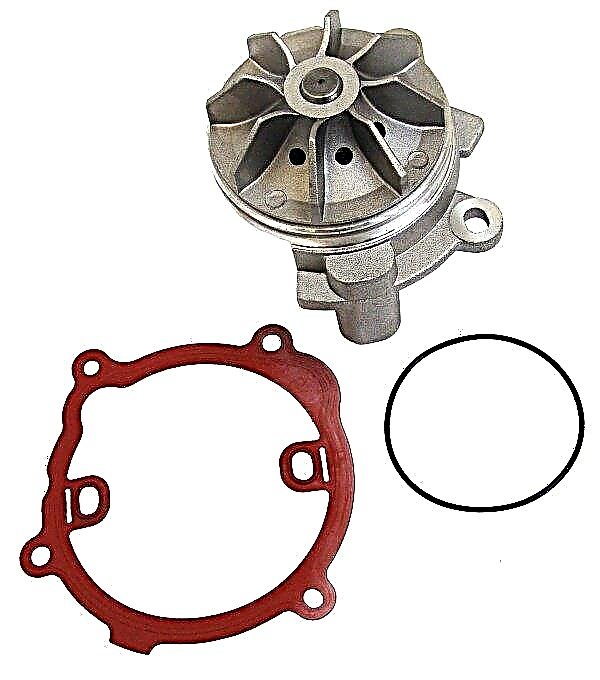

The content of the article:
- BelAZ-75501
- MAZ-7922
- MAZ-7904
- KrAZ-255
- KAMAZ
- US-0127
- ZIL-E167
The Soviet Union, unlike modern Russia, was famous throughout the world for its automobile industry, which impressed with both reliability and originality, and in some cases - and incredible scope. Indeed, almost every leading automaker has undertaken a unique, large-scale project at least once. We will talk about the most interesting of them, the results of which have become grandiose mega-machines, in the next review.
BelAZ-75501

A grandiose Soviet dump truck, non-standard, unparalleled in the world and superior to any foreign models.
The initial task was only to develop a more spacious and load-lifting vehicle. However, in the absence of tires of such a large size, as well as the need to evenly distribute the load between the front and rear wheels, the concept of a twin - twin wheels suggested itself.
But then the next question arose - will the sparkle lose its turning ability, depriving the internal space of the volume? And then the engineers had to think over the frame in the form of a hinged structure.
Thus, a seemingly simple idea developed into a unique giant with twin wheels, a cabin capable of turning relative to a vertical kingpin, which in turn connects both halves of the frame. Finally, this 15-meter vehicle received a 16.5-meter turning radius, which exceeded the indicator of its "relative" KrAZ-260, in which it is 13 meters.
At the heart of the 280-ton strongman is a 3150-horsepower V12 engine that easily propels a 480-ton dump truck. All wheels were driven and equipped with DC traction motors for greater efficiency. The result was a model that eclipsed even the world famous Komatsu and Unit Rig.
MAZ-7922

This mega-car was the last Soviet model to have a multi-wheeled chassis. The chassis machine was designed for the future installation of the Topol missile system, and therefore received a powerful 780-horsepower turbocharged V12 diesel engine.
The long 23-meter 16-wheeled model is maneuverable thanks to the steerable front and rear axles that can deflect to the sides.
Soon after the first successful development, a new modification appeared, which received the code "Bison"... It was equipped with an electromechanical transmission, a 1,000-horsepower gas turbine engine, and an improved generator set that supplied power to each electric motor in all 16 hubs.
Of the shortcomings of this amazing Belarusian creation, only the complexity of the design, large weight and high cost should be mentioned.
MAZ-7904

This terrifying-looking tractor owes its birth to the confrontation of countries during the Cold War. To transport the Celina missile system, an appropriate transport was required. The work was not easy, since the 220-ton complex required a machine of incredible power and size.
The 32-meter long monster with a 360-ton weight, 12 driving wheels and a 1200-horsepower marine engine is the result of very serious, classified design, experimentation and testing, which took place exclusively at night. To provide the auxiliary systems with the required level of energy, the car received an additional diesel 330-horsepower engine.
To reduce the already phenomenal weight, the cabin was made of fiberglass, while tires had to be purchased from a Japanese company under a plausible pretext, since no Soviet enterprise produced products of this size and strength.
Each wheel was subjected to a load of 30 tons and was driven by two hydromechanical synchronized gears. The maximum speed that a multi-ton tractor could develop was 27 km / h.
During the tests carried out in Kazakhstan, engineers recorded a number of shortcomings: low cross-country ability and poor controllability, low speed and rigidity... In addition, due to the monstrous axial load, the car easily fell through and got stuck in the ground.
As a result, the first and only prototype settled for a long time in the hangar of the design bureau, where it rusted for years, until finally it was cut into scrap metal.
KrAZ-255

The legendary truck that made the Ukrainian and Soviet automotive industry famous and became almost a cult among the people.
The beloved "laptezhnik" was the pride of the Soviet workers and one of the most widespread vehicles in the Union. Released more than half a century ago, it still does not lose its relevance and serves as the standard of cross-country ability and reliability. In the 60s, engineers and designers had not yet deviated from the specifics of the production of military equipment, and the course towards the development of the Far North made it possible to apply the acquired skills in the development of durable and practical vehicles.
The authorities wanted to see equipment that would feel great on absolute off-road and at the same time efficiently transport heavy loads from mining pits to the receiving station.
The "laptezhnik" was driven by an 8-cylinder 4-stroke 240-horsepower engine, which consumed half the fuel compared to all previous similar machines. With a carrying capacity of 7.5 tons, the truck developed a good speed of 70 km / h, and wide-profile tires helped to maintain excellent stability on the roads and overcome absolutely any off-road conditions.
A feature of these tires was an innovative system for adjusting their pressure at that time, which could be carried out without leaving the wheel. And the possibility of refueling the car with kerosene in addition to gasoline made it a popular tractor at airfields.
Thanks to such characteristics, the truck was used for the needs of army units, transporting both goods and people, and in industry, becoming a legend in the domestic auto industry. It was even believed that he was capable of pulling a dozen cars loaded with coal.
But not everyone could become a driver of this heavy truck - to control a steering wheel devoid of a power steering, considerable physical strength was required.
KAMAZ

The entire KAMAZ brand can be called the king of the Soviet and now Russian automobile industry.
The result of ten years of construction was the most ambitious plant of the 70s, to the equipment of which many enterprises of other countries have had a hand. By the beginning of the 80s, more than 100,000 pieces of equipment had rolled off the assembly line, which were sold throughout the Soviet republics.
The first model was a tractor with a lifting capacity of 8 tons and a convenient stowage of goods on all three openable sides. The metal body had a solid wooden floor, the ability to fix a protective awning, and when fully loaded, this 7-meter road train acquired a weight of more than 26 tons.
The cabin, which had 3 seats, was deprived of a berth, but even such a significant drawback did not prevent the model from becoming the standard among freight transport for many years.
Instrumentation, indicators, signaling system, two-pointer pressure gauge, electronic engine speed sensor, platform position switch - the entire dashboard has allowed the truck to become the leader in ensuring safety for the driver and passengers.
Subsequently, the cab was supplemented with a berth, making the tractor a real home on wheels, maintainable, practical, passable and reliable.
US-0127

The articulated road train was designed to transport gas pipes to hard-to-reach regions.
In addition to the frame, wheels and transfer case, the car did not have specific parts or assemblies, which made it quite maintainable. For the simplicity of the chassis, a fracture of the frame and balancing bogies from the URAL were added to it, the power unit was also taken from this car - a 240-horsepower YaMZ-238.
As an experiment, the model was supplemented with a pneumatic roller and arched tires, comparing the advantages and disadvantages and choosing the best option. So, in terms of the minimum turning radius, this truck surpassed the closest competitors - KrAZ-255B (13.5 m) and Ural-375D (10.5 m). But in terms of dynamism and efficiency, NAMI was significantly inferior, losing 67% of the total losses from the presence of pneumatic rollers, while the KrAZ-255B had 54%.
The handling was not the best either, especially when driving at high speed, when the truck reacts too sharply to a turn of the steering wheel. It could not boast of its development and maneuverability, which, on the whole, was comparable to the Ural-375D all-terrain vehicle, but was inferior in several characteristics.
NAMI was sent to Uzbekistan and Turkmenistan for the construction of a gas pipeline, on the way faced with multiple ascents to the dunes, which have a height of 100 meters and a steepness of 14 °. The truck was skidding in dry sand and could not overcome natural obstacles. Therefore, not a single attempt to deliver an 8-ton whip to the highway was successful - they had to be transported through difficult places with T-100M tractors.
NAMI tractors did not go into the series; For some time, experiments continued on them - an increase in carrying capacity, retraining into timber carriers - which also were not crowned with success.
ZIL-E167

The snowmobile and all-terrain vehicle of cross-country ability had to be used in conditions of absolute off-road and bad weather conditions.
It was driven by two 118-horsepower ZIL-375 engines, located in the rear and having side air intakes for better cooling. The huge wheels with a diameter of 1790 mm had unparalleled fiberglass assembly disks with metal elements, which weighed 3 times less than the standard disks of other trucks.
The bottom was protected from damage by steel sheets and to improve glide on ice. The fiberglass cabin was heated by independent heaters, due to its lightness, contributing to the development of speeds up to 75 km / h.
However, this unique one did not reach mass production due to its complex design and poor maintainability, as a result of which the GT-1 tracked tractor was preferred.
Conclusion
If we compare the Soviet and Russian auto industry, then, despite the unique technologies, futuristic designs, an abundance of electronic assistants and systems, Soviet engineers had truly limitless possibilities.
This was explained mainly by the fact that most of the developments were ordered, regulated and financed by the state, which did not spare funds for truly grandiose cars. That is why during the times of the USSR one could see rare, unique, inimitable copies, which, unfortunately, modern cars cannot boast of.











